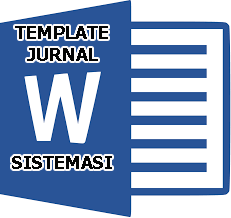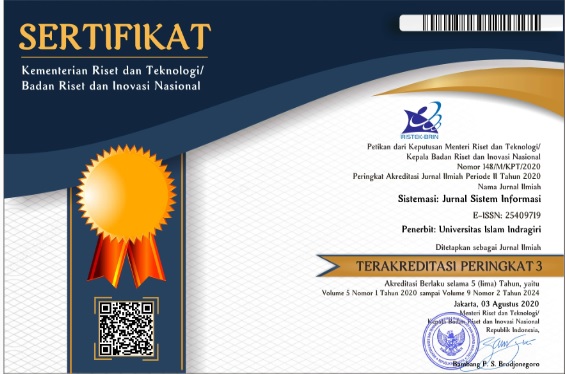Implementation of Indoor 4G Signal Interference Detection using USRP B210 and RTL-SDR
Abstract
Keywords
Full Text:
PDFReferences
T. Oyedare, V. K. Shah, D. J. Jakubisin, and J. H. Reed, “Interference Suppression using Deep Learning: Current Approaches and Open Challenges,” IEEE Access, Vol. 10, No. June, pp. 66238–66266, 2022, doi: 10.1109/ACCESS.2022.3185124.
R. Muralitharan, U. Jayasinghe, R. G. Ragel, and G. M. Lee, “Machine Learning and Deep Learning-based Atmospheric Duct Interference Detection and Mitigation in TD-LTE Networks,” Futur. Internet, Vol. 17, No. 6, p. 237, 2025, doi: 10.3390/fi17060237.
A. Owfi, F. Afghah, and J. Ashdown, “Meta-Learning for Wireless Interference Identification,” IEEE Wirel. Commun. Netw. Conf. WCNC, Vol. 2023-March, 2023, doi: 10.1109/WCNC55385.2023.10119039.
M. Engelhardt, S. Giehl, M. Schubert, A. Ihlow, C. Schneider, A. Ebert, M. Landmann, G. D. Galdo, C. Andrich, “Accelerating Innovation in 6G Research: Real-Time Capable SDR System Architecture for Rapid Prototyping,” IEEE Access, Vol. 12, pp. 118718–118732, 2024, doi: 10.1109/ACCESS.2024.3447884.
R. R. Yakkati, R. R. Yakkati, R. K. Tripathy, and L. R. Cenkeramaddi, “Radio Frequency Spectrum Sensing by Automatic Modulation Classification in Cognitive Radio System using Multiscale Deep CNN,” IEEE Sens. J., Vol. 22, No. 1, pp. 926–938, 2022, doi: 10.1109/JSEN.2021.3128395.
M. B. Perotoni and K. M. G. dos Santos, “SDR-based Spectrum Analyzer based in Open-Source GNU Radio,” J. Microwaves, Optoelectron. Electromagn. Appl., Vol. 20, No. 3, pp. 542–555, 2021, doi: 10.1590/2179-10742021V20I31194.
M. P. Stef and Z. A. Polgar, “Software Platform for the Comprehensive Testing of Transmission Protocols Developed in GNU Radio,” Inf., Vol. 15, No. 1, 2024, doi: 10.3390/info15010062.
J. P. Manzano, V. M. Maroto, A. Villarín, J. Pagan, and K. Kunci, “HackRF + GN U Radio : Radio yang ditentukan perangkat lunak untuk mengajarkan Teori Komunikasi Alberto a Del Barrio Marina Zapater , José Ayala dan Perkenalan”.
I. Samy, X. Han, L. Lazos, M. Li, Y. Xiao, and M. Krunz, “Misbehavior Detection in Wi-Fi/LTE Coexistence Over Unlicensed Bands,” IEEE Trans. Mob. Comput., Vol. 22, No. 8, pp. 4773–4791, 2023, doi: 10.1109/TMC.2022.3164326.
M. Seguin, A. Omer, M. Koosha, F. Malandra, and N. Mastronarde, “Deep Reinforcement Learning for Downlink Scheduling in 5G and Beyond Networks: A Review,” IEEE Int. Symp. Pers. Indoor Mob. Radio Commun. PIMRC, 2023, doi: 10.1109/PIMRC56721.2023.10293754.
S. Jere, Y. Wang, I. Aryendu, S. Dayekh, and L. Liu, “Bayesian Inference-Assisted Machine Learning for Near Real-Time Jamming Detection and Classification in 5G New Radio (NR),” IEEE Trans. Wirel. Commun., Vol. 23, No. 7, pp. 7043–7059, 2024, doi: 10.1109/TWC.2023.3337058.
P. K. Nakarmi, J. Sternby, and I. Ullah, “Applying Machine Learning on RSRP-based Features for False Base Station Detection,” ACM Int. Conf. Proceeding Ser., No. Ares, pp. 1–9, 2022, doi: 10.1145/3538969.3543787.
N. Bello and K. O. Ogbeide, “Designing a Real-time Swept Spectrum Analyser with USRP B210,” Niger. J. Environ. SCI. Technol., Vol. 5, No. 2, pp. 329–339, 2021, doi: 10.36263/nijest.2021.02.0275.
J. Long, R. Frekuensi, H. F. J. Lami, and S. I. Pella, “Analisis Dampak Interferensi terhadap Kualitas Sinyal,” J. media elektro, Vol. XI, No. 1, pp. 31–38, 2022, doi: 10.35508/jme.
F. H. Melvandino, W. Y. Bragaswara, H. Ramza, F. T. Industri, T. Elektro, and K. Rambutan, “Analisis Test Kelurahan Kampung Rambutan , Jakarta,” Vol. 11, No. 3, 2023.
DOI: https://doi.org/10.32520/stmsi.v14i5.5450
Article Metrics
Abstract view : 836 timesPDF - 79 times
Refbacks
- There are currently no refbacks.

This work is licensed under a Creative Commons Attribution-ShareAlike 4.0 International License.









